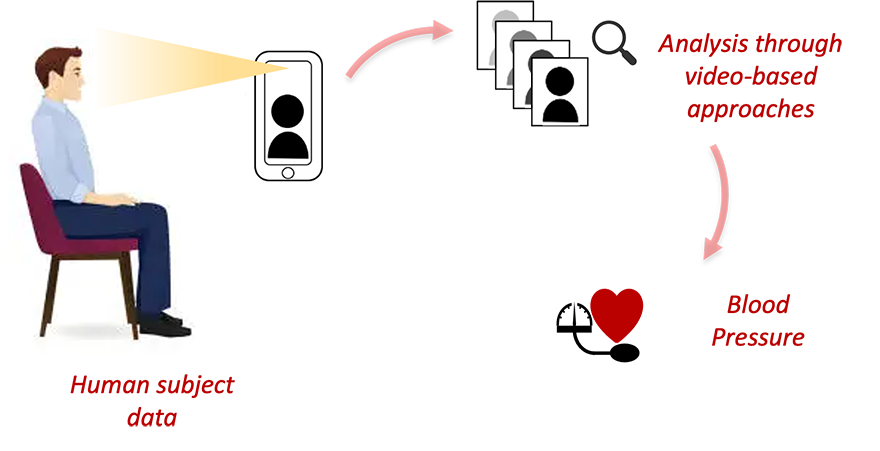Time to check your blood pressure—no cuff required
Computer vision technology allows for video-based estimation of blood pressure.
Ananyananda Dasari joined the lab of Conrad Tucker, director of Carnegie Mellon University Africa and professor of mechanical engineering, at the height of the Covid-19 pandemic. Like the rest of the world, Dasari adapted to a new, remote lifestyle full of Zoom meetings and telehealth appointments.
“A lot of communities were stuck in difficult scenarios during this time if they didn’t have access to a computer,” he said. “I always wanted to join a research area that was making a significant impact ,and the need for more scalable, remote health systems was clear.”
Dasari, a Ph.D. candidate in mechanical engineering, is the lead author of a research paper that demonstrates the effectiveness of a video-based approach to estimating an individual’s blood pressure.

Computer vision model can estimate patient blood pressure through video-based analysis.
For a patient, collecting the measurement is as easy as uploading a video of themselves holding their right hand beside their ear, palm open, to a website. On the backend, Dasari and team have developed a computer vision algorithm capable of processing the video to identify blood pulses in both the patient’s hand and face.
“We wanted the algorithm to process two different locations in the body that are not close to one another at the same time. We study the signals from both locations to compare and contrast the transient time between both locations. This lets us estimate blood pressure more accurately.”
While there are existing artificial intelligence algorithms that can accurately predict an individual's blood pressure, those models fall victim to out of distribution detection, the ability of an AI model to generalize beyond the data it was trained on. By using computer vision technology, the proposed model is able to generalize beyond controlled laboratory settings.
As researchers, we need to ensure that the innovations we develop in the lab are able to translate into real world solutions that positively impact people.
Ananyananda Dasari, Ph.D. candidate, Mechanical Engineering
Today, this technology exists as a publicly-available research paper. However, moving forward, Dasari and team hope to convert it to a website and a mobile phone app. He plans to continue enhancing the accuracy of the readings and is also looking to apply this sort of technology to other medical readings. Next up: reading blood sugar levels.
Dasari is passionate about making healthcare contributions that scale and positively impact patients.
“As researchers, we need to ensure that the innovations we develop in the lab are able to translate into real world solutions that positively impact people. We are excited that our research continues to bridge this gap.”
